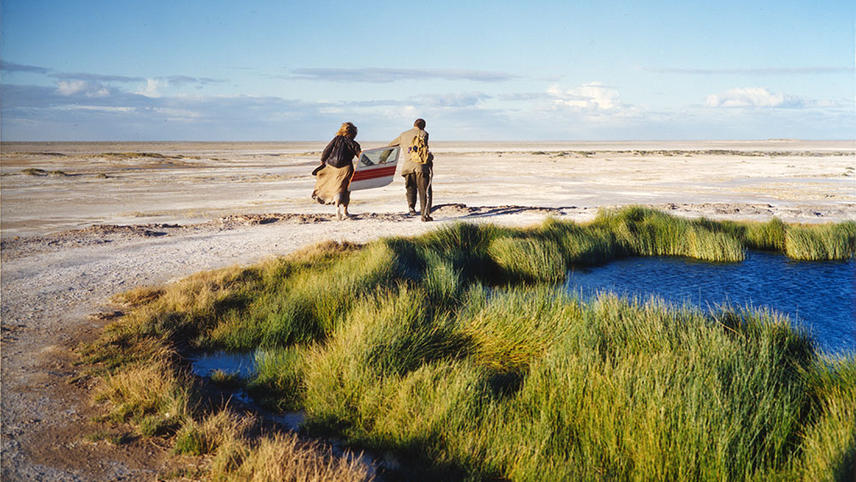
A road trip movie’s plot typically revolves around a group of characters taking a trip from one point to another, making stops along the way and having various things happen to them. They may run into unusual people and places along the way and all of this tend to teach or resolve some issues with the characters by the end of the story.
These films are normally associated with people traveling in a car or some type of motorized vehicle, covering the vast amount of highways and roads that cover the United States and other countries.
Wild Boys of the Road (1933) and Sullivan’s Travels (1941) are some early examples of a road picture. The genre didn’t really fully blossom until after Jack Kerouac’s novel On the Road was released in 1957 and the early 1960’s when baby boomers started traveling the highways. The two motion pictures that truly sparked the genre and created a prototype for the modern road movies were Bonnie and Clyde and Easy Rider.
The success of both of those pictures led to a large group of similar ones during the 1970’s and it has carried on to current cinema with the likes of Dumb and Dumber, Little Miss Sunshine, and Sideways. The common ground among them all is the road trip, as they can vary in being comedic, dramatic, or terrifying.
This list contains a little bit of everything, with at least one film from every decade between 1940 and 1990 and at least one from America, England, Finland, Germany, and Australia. This list is a varied collection of cult films and trashy pictures; all ranging between being critically hailed, being exploitative and controversial, and being considered so bad that they are great.
[Author’s Note: This list is not meant to be an all inclusive list or a best of list; it is simply fifteen cult movies that may be worth your time.]
1. Detour (1946)
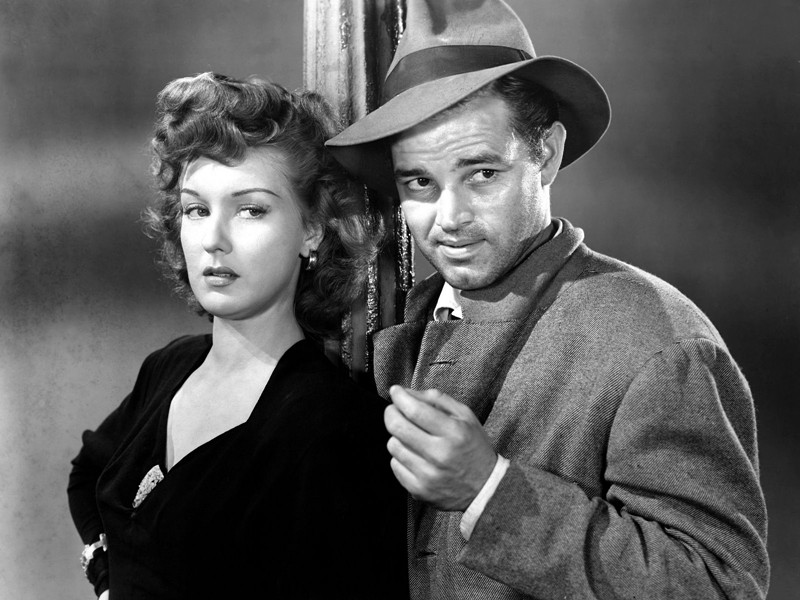
“He went searching for love… but Fate forced a DETOUR to Revelry… Violence… Mystery!” [1]. A hitchhiker named Al (Tom Neal) is traveling from New York to California to live with his girlfriend, on the way he is picked up by bookie Charles Haskell Jr. in Arizona. Al is driving when a rainstorm forces him to pull over to put the top up. Unable to wake Haskell, he opens the passenger side door and Haskell falls out and strikes his head on a rock and dies.
Fearing being charged with murder, he assumes the identity of the dead man with the plan of ditching the car somewhere in California. Once in California, he picks up female hitchhiker Vera (Ann Savage) who had previously ridden with Haskell and blackmails Al by threatening to turn him in. Things continue to spiral for Al as he gets dug even deeper into a situation that he cannot escape from.
Despite being a low budget motion picture, this has become to be considered a great piece of film noir and one of the quintessential low-budget versions. Directed by Edward G. Ulmer, he created a surrealistic world in which the story is told by the protagonist as if it’s some sort of nightmare that he cannot get out of.
The movie really hits its stride when the femme fatale Vera shows up, who chews up the scenery as the rough and tough talking dame. Her dialogue and their back and forth are what make this one so great. Despite Savage appearing in other femme fatale roles, this film is her main claim to fame and is part of why it remains so popular among fans of the genre.
2. Hitch-Hiker (1953)
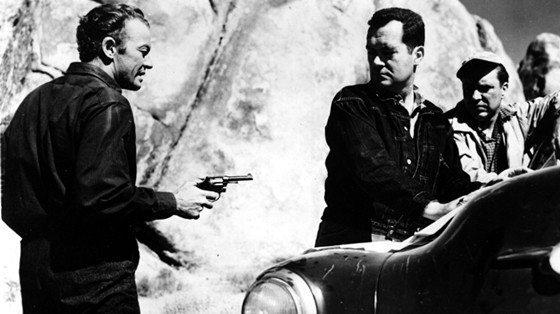
“There’s Death in his upraised Thumb!” [2]. Inspired by the real life murder spree of Billy Cook, this film noir is about two fishermen who pick up a psychopath that has been murdering people along the highways. He forces them at gunpoint to go from California into Mexico, with the plan of going to the Baja California Peninsula to catch a ferry across the Gulf of California.
This is another excellent film noir, which has the distinction of being the first one to be directed by a woman. It was made by Ida Lupino, who was an actress known for playing hard-luck dames in movies and then also turned to directing in 1949 with Never Fear. It is also notable for not featuring a femme fatale and also not being located in the city, instead replacing the isolated darkness of the city for a lonely and isolated desert location.
The cinematography is superb, with great shadows and claustrophobic car and nighttime scenes that are juxtaposed with the tremendous visuals of the vastness of the desert and empty roads. Time Out’s review declared it as “taut, tough, and entirely without macho-glorification, it’s a gem, with first-class performances from its three protagonists, deftly characterized without resort to cliché” [3].
3. Easy Rider (1969)
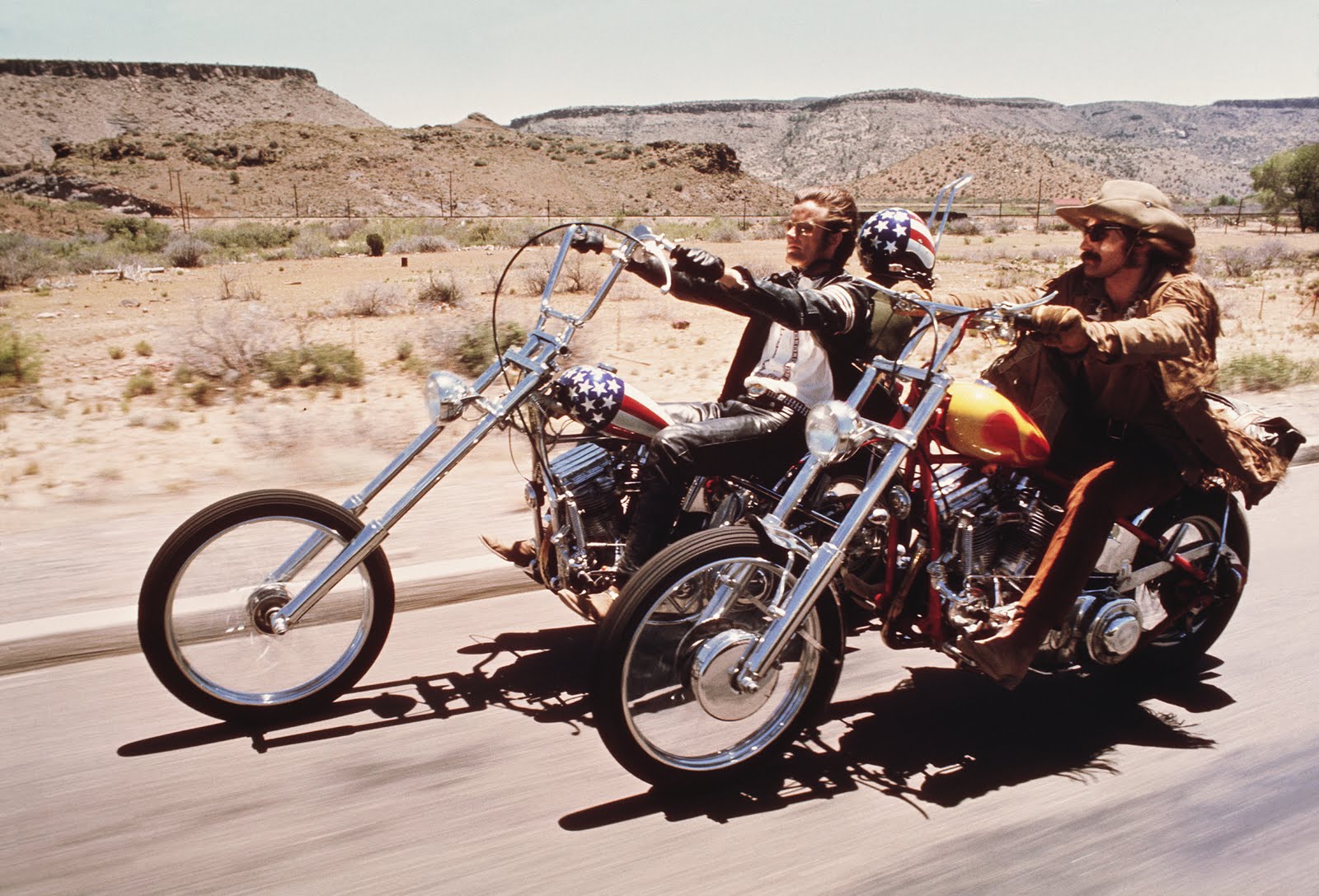
“A man went looking for America. And couldn’t find it anywhere” [4]. What much really needs to be said about this picture, it is pretty much the essential biker, drug, and counterculture movie that began to usher in what would be the new Hollywood in the 1970’s.
It was a monumental counterculture film that dealt with bikers, but focused more on social changes, the hippie lifestyle, and drug use. Peter Fonda and Dennis Hopper play two bikers who travel across country after selling a large amount of cocaine, during the way they pick up an alcoholic lawyer played by Jack Nicholson, do drugs and meet prostitutes, get put in jail, and encounter unfriendly local rednecks.
It was a huge financial success and was the third highest grossing movie for the year, only behind Bonnie and Clyde and The Graduate. It was nominated for two Academy Awards, Best Original Screenplay and a Best Supporting Actor nomination for Jack Nicholson.
The soundtrack was considered groundbreaking at the time and featured rock bands such as The Band, The Byrds, The Jimi Hendrix Experience, and Steppenwolf. It also appeared on AFI’s list of 100 movies 100 years and was added to the Library of Congress’s National Film Registry in 1998.
4. Five Easy Pieces (1970)
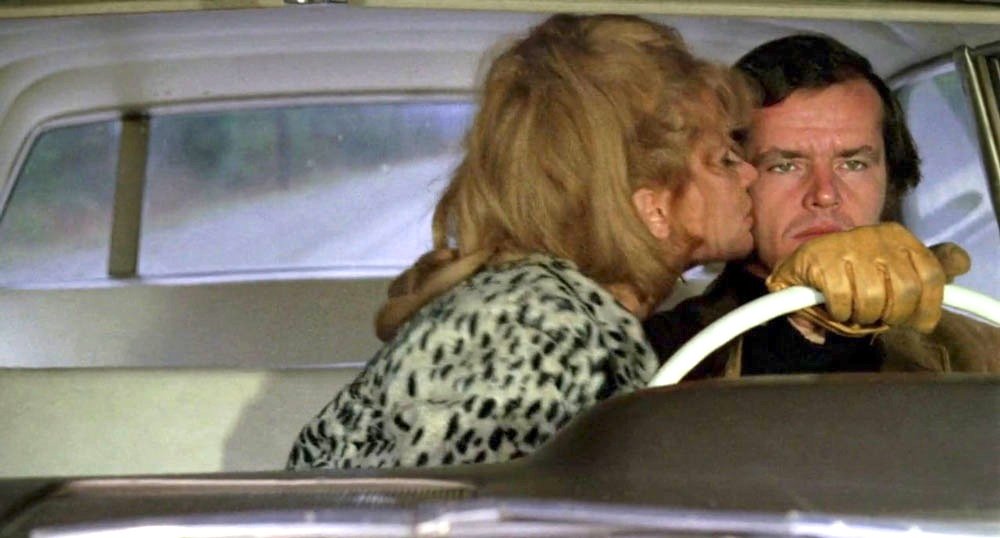
“He Rode The Fast Lane On The Road To Nowhere” [5]. This is a drama about Bobby Dupea (Jack Nicholson) who has been hiding his past as a piano prodigy in a wealthy family, choosing instead a life working on oil rigs, drinking, and womanizing. When he learns of his father’s sickness and impending death, he drives from California to Washington bringing his unhinged girlfriend. Along the way he picks up some hitchhikers heading to Alaska and has an infamous tirade in a diner.
This is an excellent movie featuring several great performances, a good story, and some superb cinematography from Laszlo Kovacs. It was nominated for four Academy Awards in 1971; Best Picture, Best Original Screenplay, Jack Nicholson for Best Actor, and Karen Black for Best Supporting Actress. Roger Ebert gave a masterful review stating that it is “refers not to the women its hero makes along the road…but to a book of piano exercises he owned as a child. The film, one of the best American films, is about the distance between that boy, practicing to become a concert pianist, and the need he feels twenty years later to disguise himself as an oil-field rigger. When we sense the boy, tormented and insecure, trapped inside the adult man, [it] becomes a masterpiece of heartbreaking intensity….The movie is joyously alive to the road life of its hero. We follow him through bars and bowling alleys, motels and mobile homes, and we find him rebelling against lower-middle-class values even as he embraces them. In one magical scene, he leaps from his car in a traffic jam and starts playing the piano on the truck in front of him; the scene sounds forced, described this way, but Rafelson and Nicholson never force anything, and never have to. Robert Dupea is one of the most unforgettable characters in American movies” [6].
5. Badlands (1973)
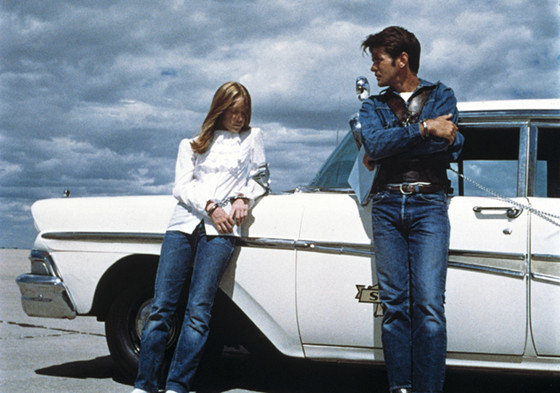
“In 1959 a lot of people were killing time. Kit and Holly were killing people” [7]. This was one of many films that were loosely based upon the murder spree of Charles Starkweather and Caril Ann Fugate in 1958.
15 year old Holly (Sissy Spasek) is a young and impressionable teenager who falls in love with the wild and charming garbage collector Kit (Martin Sheen), who resembles James Dean. Her father (Warren Oates) disapproves of their relationship and Kit murders him and they go on the run, traveling from South Dakota to the badlands of Montana and killing people along the way.
Their relationship is childlike and resembles the adventures in children’s books like Treasure Island and Peter Pan, with Kit’s murdering being a magical way of eliminating small nuisances. Holly eventually grows tired of Kit and this lifestyle and refuses to continue on with him and he ends being caught by the police after a car chase.
This was writer, director, and producer Terrence Malick’s first feature length motion picture and can easily still be considered his masterpiece. He has also directed Days of Heaven, The Thin Red Line, The New World, Tree of Life, and Knight of Cups. Spasek and Sheen are both excellent in this as self absorbed children who are partially living in a fantasy world that is filled with real life violence.
6. Scarecrow (1973)
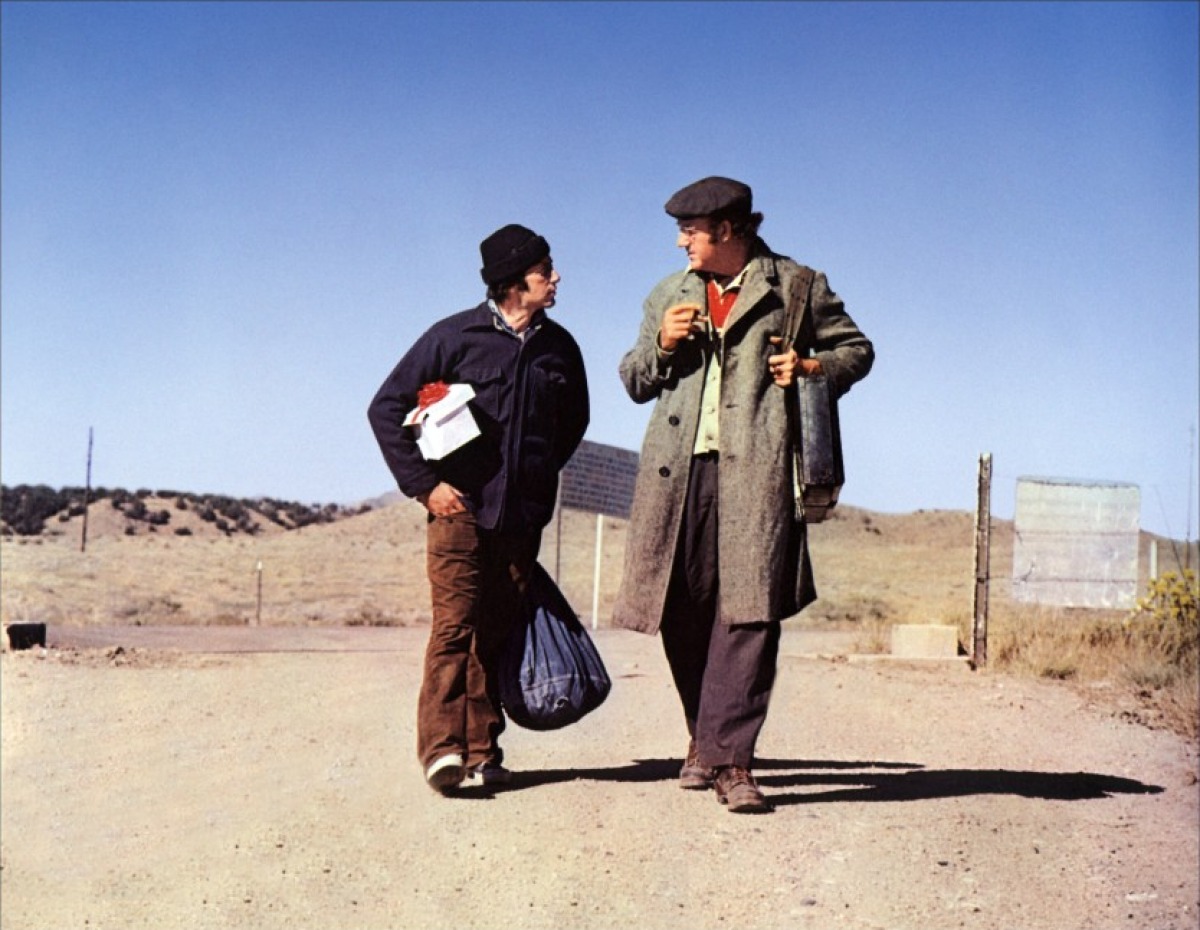
“The road leads itself to somewhere” [8]. Max (Gene Hackman) and Lion (Hackman) are a pair of drifters who form an oddball relationship after meeting on the road. Max is a brutish ex-con with a violent temper who likes to drink, have sex, and get into fights.
Lion is comedic child like character who has recently gotten out of the Navy and is traveling to visit a child he fathered that he has never seen. Both are traveling East by any means necessary with the goals of arriving in Detroit and then Pittsburgh, along the way they end up in small towns, small bars, meet Max’s sister, and spend some time in jail.
This has a mix of comedy and drama that shows a time in Americana where men could roam free, treading somewhere outside the norms of regular society. It contains stunning visuals from cinematographer Vilmos Zsigmond, who does an amazing job of showcasing the vastness of the plains and the open roads.
Both Hackman and Pacino deliver excellent performances that mix both comedic and dramatic elements, especially Pacino who gives some of his funniest and most unusual comedic moments of his career into this film.
7. Kings of the Road (1976)
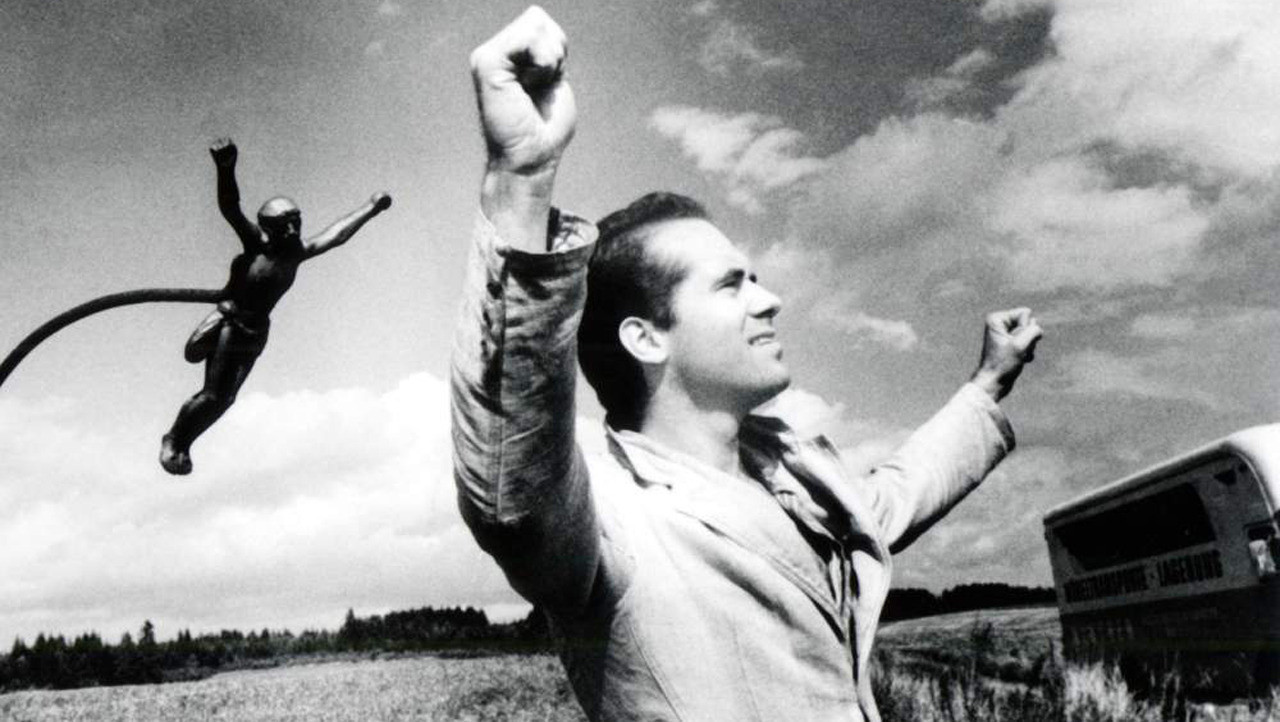
This is a German film from director Wim Wenders and it is the third part of his road trilogy, which included Alice in the Cities and The Wrong Move. It is about a film projection repair man who meets a depressed man who tries to commit suicide by driving his car into a river. They end up traveling together along the Western side of the East-German border in his repair truck, visiting small towns and run down theaters.
It is a beautiful black and white movie that features long takes without any dialogue, with the focus on the locations, sweeping landscapes, and old towns and factories. It also is noted for containing a scene where one of the actors defecates and several instances of male frontal nudity.
It follows a world that is virtually nonexistent today, as film and the projectors that are used have mostly been replaced for digital projection. It has been called Wender’s magnus opus and is widely considered to be one of the ultimate road movies. Film critic Derek Malcolm says that it “achieves a palpable sense of time, place and atmosphere, and of how everybody is affected by their tiny spot in history” [9].